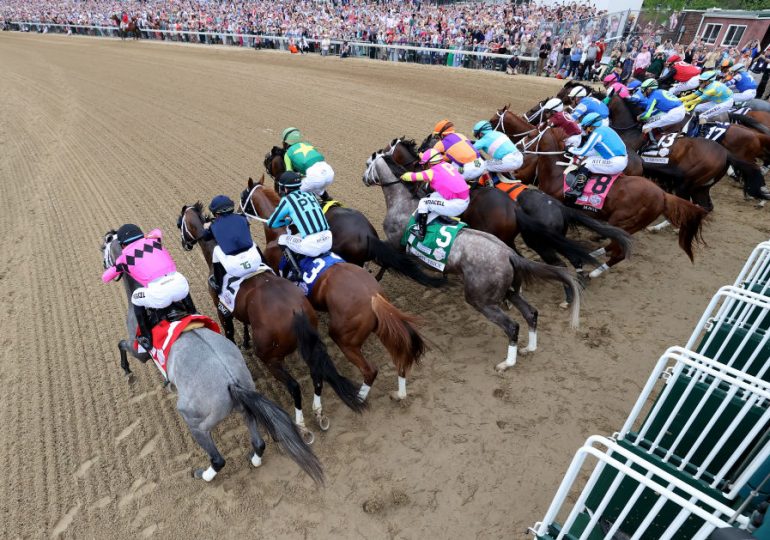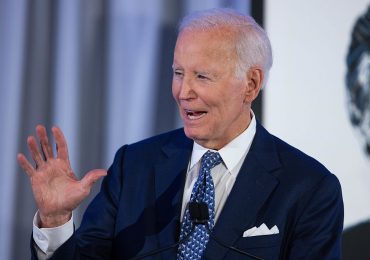Saturday will mark the 150th running of the Kentucky Derby, which takes place at Churchill Downs. While coverage of the Derby will probably focus on memorable races and moments from the past, this auspicious anniversary is also an opportune time to scrutinize the racist history of the sport and that of the Churchill family after whom Churchill Downs is named.
[time-brightcove not-tgx=”true”]
The story of Churchill Downs begins with the patriarch of the family, Armistead Churchill. Born in 1733, he fought for the Virginia colonists during the Revolutionary War. He later acquired several hundred acres of land in what would later become Louisville, Ky. Armistead used enslaved labor to work the land and when he died, he left some of the property to his youngest son, Samuel B. Churchill Sr.
Around 1850, Samuel gave some of his land to two of his sons, John and Henry. The Churchill sons leased a portion to a nephew named Meriwether Lewis Clark Jr., the grandson of the famed explorer William Clark of the Lewis and Clark Expedition. Clark founded the Louisville Jockey Club and built a racecourse later named Churchill Downs in honor of the family on whose land it rested. Churchill Downs opened in 1875 and the Derby is the longest continually running sporting event in the U.S.
The Churchill family wealth depended on the labor of enslaved people. Armistead Churchill, who first relocated the family to Kentucky, was the grandson of a wealthy Virginia plantation owner, William Churchill. When his grandson moved to Kentucky, he sent enslaved people ahead to engage in the laborious work of clearing the land and building a house for the white slaveholding family. As one of the richest families in the area, the Churchill family grew hemp, tobacco, and other crops. The sale of those items allowed them the luxury of becoming involved in civic affairs and the leisure to breed and race horses.
Upon his death, Samuel Churchill left his enslaved people to his children, and they continued this exploitation. His youngest daughter, Julia, married a physician and enslaver named Luke P. Blackburn. A native of Kentucky, Blackburn married Julia in 1857, and the two enjoyed the privileges of generational wealth passed down from the Churchill family. The couple inherited a mansion in Louisville, which their enslaved laborers helped maintain. Louisville historian Juanita White records that some of the enslaved people were hired out or sold to “reinvest the proceeds to support and maintain Julia Blackburn.”
During the Civil War, Blackburn was an avowed Confederate. He was too old to serve as a soldier, but he committed to lending his aid as a civilian agent of Confederate forces. In 1863, the governor of Mississippi appointed him as a blockade runner in Canada who was tasked with smuggling essential supplies to Confederate forces.
In 1864, Blackburn traveled to Bermuda to give aid during a Yellow Fever outbreak there, and that is likely where he enacted his plan to use germ warfare against the Union. According to journalist and author Molly C. Crosby, Blackburn collected garments soiled with blood and vomit from Yellow Fever victims. He put them in trunks and shipped them to Canada. His plan was to smuggle the trunks to northern cities to infect people and decimate Union forces. One of those trunks was meant for Washington, D.C., and President Abraham Lincoln.
Blackburn’s plan failed. First, John Wilkes Booth assassinated Lincoln before the Blackburn plan had fully unfolded. Second, even if the trunk had ended up in the White House, no one would have caught Yellow Fever. Nineteenth-century medicine had not yet figured out that the disease was transferred through mosquitoes and not soiled garments.
Blackburn’s plot was only discovered after the Civil War ended. There was sufficient evidence from eyewitnesses and accomplices to lend credibility to charges of germ warfare. Since he resided in Canada at the time, Blackburn stood trial in Toronto. The court acquitted Blackburn, mainly because the attempted assassination charge was downgraded to a violation of Canada’s neutrality. However, they could not determine whether the trunks of soiled garments had ever been on Canadian soil and thus within their legal jurisdiction.
Even with his acquittal, public sentiment had turned against Blackburn. He remained in Canada after the war. Not until 1867 did Blackburn see his chance to return to the U.S. He had heard of a Yellow Fever outbreak in Louisiana and Texas and used it to his advantage. He boldly wrote a petition to return to Andrew Johnson, who had taken over the presidency after Lincoln’s assassination. “I have had much experience in the treatment of this disease and feel confident I could render essential service to my suffering and dying countrymen,” he wrote. Blackburn never waited for a response and set out for the U.S. without any express permission or exoneration.
In 1873, he and Julia moved back to Kentucky, and he opened a medical practice there. His marriage to a Churchill daughter immediately thrust him into company of Louisville’s elite. Blackburn rehabilitated his image by helping to contain several more Yellow Fever outbreaks in Tennessee, Florida, and parts of Kentucky. His notoriety and his connections made running for political office a possibility and in 1878, he announced his candidacy for governor.
At the same time, another Yellow Fever outbreak occurred, and Blackburn paused his campaign to treat the sick. He proved so successful that people across the state hailed his efforts. He rode that wave of popularity to win election and attain the highest political office in the state.
Read More: Why Justify’s Triple Crown Win Was Even More Impressive Than It Looked
It is against this backdrop of slaveholding, Confederate support, and germ warfare that the Kentucky Derby takes place at Churchill Downs. Governor Blackburn’s favorite pastime was watching horse races. Owners in Memphis even named a horse after him, “Luke Blackburn,” that went on to compete in and win dozens of races.
The legacy of slaveholding and racism in the nation and in Kentucky shaped horse racing at Churchill Downs. Even though Black men originally participated, racial animus led to the near total exclusion of Black people from the sport in the Jim Crow era. The first winner of the Kentucky Derby was a Black jockey named Oliver Lewis who rode the horse Aristides in 1875. The horse’s trainer was also a Black man, Ansel Williamson. But soon after, Black jockeys and trainers were systematically barred from competition and compensation.
In 1921, a Black jockey raced in the Kentucky Derby for the last time for 80 years. Not until the year 2000 did Marlon St. Julien break the drought and become the first Black jockey to race in the Derby in the modern era. Notwithstanding recent efforts to increase the representation of Black people in the horseracing industry, the legacy of racism is still felt today.
The Kentucky Derby is a cherished tradition in Louisville and among the horse racing community. Fans may believe that uncovering the racist roots of the Churchill family tree will tarnish the image of the event and diminish its delight. But the opposite may, in fact, prove true.
A sport and an event that have long been the nearly exclusive domain of white people can reach new audiences and levels of enjoyment if the legacy of racism is confronted honestly and laid to bare. Such efforts would signal to many, perhaps especially to those who have historically been excluded from the sport, that the Kentucky Derby and the hoopla and culture surrounding it can be for anyone. More participation and appreciation through historical truth is a win for the sport and the people who enjoy it.
Jemar Tisby is a professor of history at Simmons College of Kentucky, a historically Black college in Louisville founded in 1879. He writes frequently at JemarTisby.Substack.com and his forthcoming book, The Spirit of Justice: Stories of Faith, Race, and Resistance is available for pre-order now.
Made by History takes readers beyond the headlines with articles written and edited by professional historians. Learn more about Made by History at TIME here. Opinions expressed do not necessarily reflect the views of TIME editors.
Leave a comment








